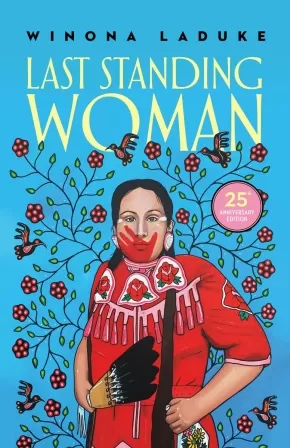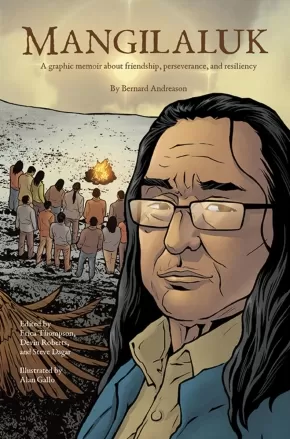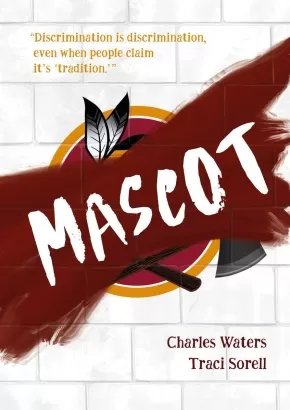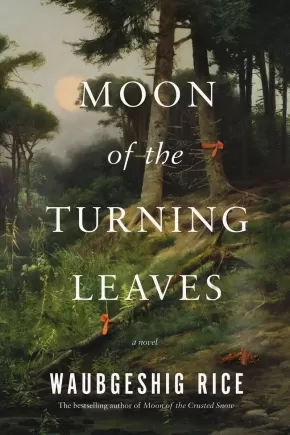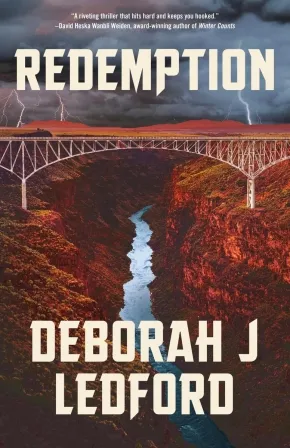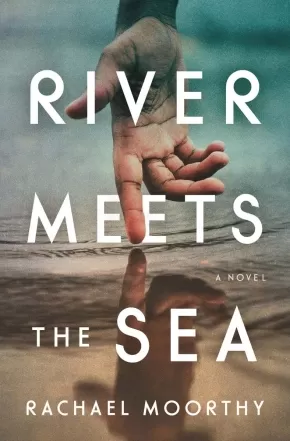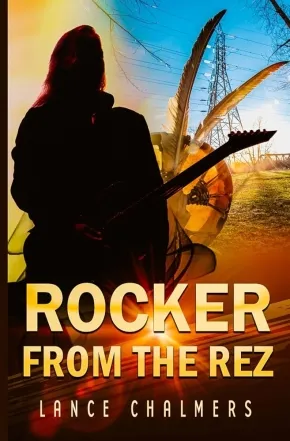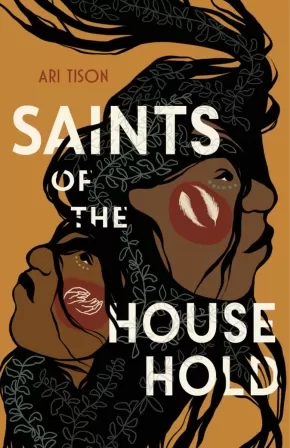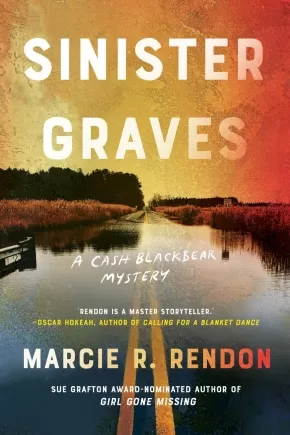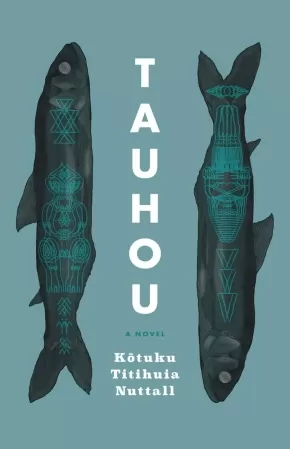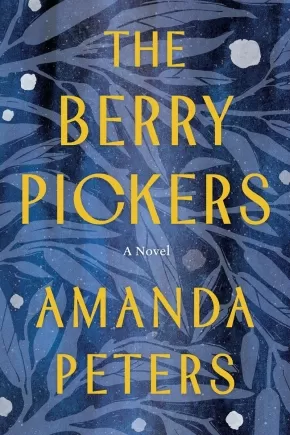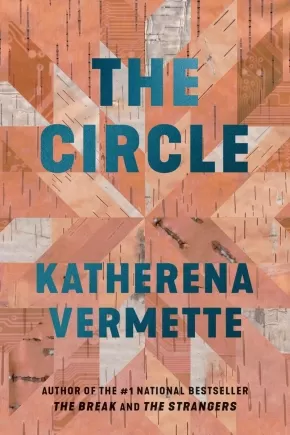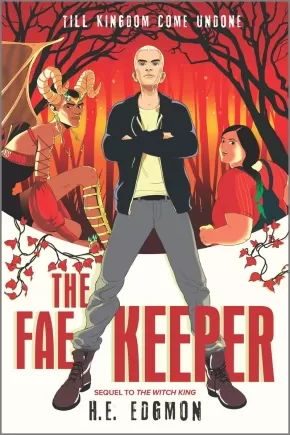
Novels
121
-
135
of
471 Results;
Sort By
Go To
of 32
Last Standing Woman
$23.95
Format:
Paperback
Text Content Territories:
Indigenous American; Native American; Anishinaabeg; Ojibwe (Chippewa); Minnesota Chippewa Tribe; White Earth Band of Ojibwe;
Reading Level: N/A
ISBN / Barcode: 9781774920527
Synopsis:
Synopsis:
Hopeful, irreverent, and deeply moving, Winona LaDuke’s Last Standing Woman chronicles the stories and struggles of an Anishinaabe community across seven generations.
Born at the turn of the 21st century, The Storyteller, also known as Ishkwegaabawiikwe (Last Standing Woman), carries her people’s past within her memories. The White Earth Anishinaabe people have lived on the same land since time immemorial. Among the towering white pines and rolling hills, each generation is born, lives out their lives, and is buried.
The arrival of European missionaries changes the community forever. Piece by piece, government policies rob the people of their land. Missionaries and Indian agents work to outlaw ceremonies the Anishinaabeg have practised for centuries. Grave-robbing anthropologists dig up ancestors and whisk them away to museums as artifacts. Logging operations destroy traditional sources of food, pushing the White Earth people to the brink of starvation.
Battling addiction, violence, and corruption, each member of White Earth must find their own path of resistance as they struggle to reclaim stewardship of their land, bring their ancestors home, and stay connected to their culture and to each other.
In this highly anticipated 25th anniversary edition of her debut novel, Winona LaDuke weaves a nonlinear narrative of struggle and triumph, resistance and resilience, spanning seven generations from the 1800s to the early 2000s.
Reviews
"Humor and compassion are ever present, and at its best, Last Standing Woman is a dignified and powerful retelling of one reservation's struggle for survival."— Booklist, quote from review of previous edition
"Rooted in LaDuke's own Anishinaabe heritage, the novel skillfully intertwines social history, oral myth and character study in ways reminiscent of Leslie Marmon Silko and Louise Erdrich." — Publishers Weekly, quote from review of previous edition
"LaDuke's characters are as vital and fully realized as any in a Louise Erdrich novel...Recommended for both public and academic libraries." — Library Journal, quote from review of previous edition
"The Anishinaabe culture leaps off the page and you can practically smell the fry bread cooking on the stove and hear the drums beating in the distance."— Book Snob, quote from review of previous edition
Additional Information
360 pages | 5.50" x 8.50" | Paperback | 25th Anniversary Edition
Mangilaluk: A Graphic Memoir about Friendship, Perseverance, and Resiliency
$18.95
Artists:
Format:
Paperback
Text Content Territories:
Indigenous Canadian; Inuit;
ISBN / Barcode: 9781774507384
Synopsis:
Synopsis:
“Some children are born into the world and are home as soon as they come Earthside. Others spend their lifetimes searching for a home, a place to belong, a place where they are safe. I am one of those children.”
After running away from residential school, Bernard Andreason and his two best friends begin a harrowing 130-kilometre journey from Inuvik to Tuktoyaktuk, one which only Bernard would survive. In this heartbreaking and beautifully told graphic memoir, Bernard recounts his time in residential school and the tragic journey that took the lives of his two best friends. We then follow Bernard as he returns home, haunted by his past and struggling to find his place. Despite enduring more challenges into adulthood, Bernard never stops pursuing healing and higher learning, and he finds a support network that helps him. His story shows us that the possibility of finding a safe and loving home exists, and it is something every child deserves.
Mangilaluk is an extraordinarily affecting new addition to Qinuisaarniq ("resiliency"), a collection of books created to educate readers about the history and impacts of residential schools.
Educator Information
Recommended for ages 14 to 18.
Mangilaluk exposes readers to the experience and perspective of an Inuk residential school survivor. It also shares a powerful story of friendship, personal growth and self-forgiveness, and the value of finding a supportive community.
This book is part of the Qinuisaarniq program. Qinuisaarniq (“resiliency”) is a program created to educate Nunavummiut and all Canadians about the history and impacts of residential schools, policies of assimilation, and other colonial acts that have affected the Canadian Arctic.
Each resource has been carefully written and reviewed to include level-appropriate opportunities for students to learn about colonial acts and policies that have affected Inuit. These acts and policies created long-lasting impacts on Inuit individuals and communities, which are still being felt today.
Additional Information
100 pages | 7.25" x 11.00" | Paperback
Mascot
$21.99
Format:
Hardcover
Text Content Territories:
Indigenous American; Native American; Cherokee;
ISBN / Barcode: 9781623543808
Synopsis:
Synopsis:
What if a school's mascot is seen as racist, but not by everyone? In this compelling middle-grade novel in verse, two best-selling BIPOC authors tackle this hot-button issue.
Six kids. One mascot. Who wins?
In Rye, Virginia, just outside Washington, DC, people work hard, kids go to school, and football is big on Friday nights. An eighth-grade English teacher creates an assignment for her class to debate whether Rye’s mascot should stay or change. Now six middle schoolers–-all with different backgrounds and beliefs–-get involved in the contentious issue that already has the suburb turned upside down with everyone choosing sides and arguments getting ugly.
Told from several perspectives, readers see how each student comes to new understandings about identity, tradition, and what it means to stand up for real change.
Reviews
"Waters and Sorell (Cherokee Nation) join forces to write about the power of being true to oneself.
In a middle school in Rye, a fictional town near Washington, D.C., a racist mural and offensive pep rally chants shock new student Callie Crossland, who is a citizen of the Cherokee Nation and African American. Callie shares a heartfelt poem with her seventh grade honors English class, reminding everyone that the “stupid tomahawk-chop chant” and the “cheap chicken-feather headdress” are nothing less than symbols of “white supremacy.” Afterward, Ms. Williams, her teacher, assigns a persuasive writing and oration project entitled “Pros and Cons of Indigenous Peoples as Mascots.” The small, broadly diverse group of students is assigned to work in pairs; Callie is matched with Franklin, who is Black and a proud fan of the Rye Braves football team. Franklin insists, “I wish we could Lysol racism away. / It’s a bad odor,” but he feels conflicted: “I still don’t think our mascot is racist though. It brings so much joy. / …what’s the big deal?” This clever novel unfolds in poems told in multiple voices showing the wide range of students’, families’, and community responses to the controversy; for some, initial feelings of opposition, hesitation, or indifference change and friendships are tested. The compelling, highly relevant subject matter and accessible text invite readers to understand different perspectives and witness individual growth.
A brilliant story not to be missed; deeply engaging from the first page. (glossary, additional information and resources) (Verse fiction. 10-14)" —Kirkus Reviews, starred review
"Told via seven alternating narratives, this ripped-from-the-headlines collaboration in verse by Waters (African Town) and Cherokee Nation member Sorrel (One Land, Many Nations) follows a fictional town’s division over a racist sports mascot. Callie Crossland, who is Cherokee and Black, has just transferred to a middle school in Rye, Va. She immediately expresses disgust at her school’s mascot, a “copper-toned, muscled, loincloth-clad, tomahawk-wielding” caricature of an Indigenous person. Callie’s English teacher Ms. Williams soon assigns a group writing project regarding the “Pros and Cons of Indigenous Peoples as Mascots,” and Callie is annoyed at being paired with Black classmate Franklin, who believes the mascot “brings so much joy.” Waters and Sorrel paint a complex portrait of the differing reactions toward the controversy by layering the racially diverse tweens’ perspectives and showcasing the effects the event has on their individual relationships and the community beyond their school. The creators eschew judgment to present a well-rounded discussion about classism and racism, as well as effective allyship, with compassion and understanding. A glossary and resources conclude. Ages 10–up." —Publishers Weekly, starred review
"Ms. Williams tasks her... honors English students with a persuasive writing and oral presentation assignment arguing the pros and cons of using Indige-nous peoples as mascots. Throughout the course of a school year the story unfolds in a series of poems that detail the per-spectives of six students: Callie (Cherokee African), Franklin (African American), Priya (Indian American), Luis (Salvadoran American), Tessa (white and previously homeschooled), and Sean (working-class white). Predictably, Callie, Priya, and Tessa (who sees herself as a committed antiracist) oppose Indigenous mascots, while the boys, who enjoy war paint and tomahawk chops at Rye Braves games, claim the mascot de-picts pride in the team and their school. While the discord around the mascot is a long-standing one in the Virginia community, the assignment empowers the students to take the issue to the school board. After further research, one student switches sides, losing a friend in the process. While the plot requires a fair amount of exposition detailing history and arguments on both sides, the characters are well developed and believable, and the story flows smoothly. A valuable classroom pick that demonstrates the importance of debate." —Booklist
Educator Information
Recommended for ages 10+
Includes a glossary and additional resources / information.
Subjects / Themes: Discrimination, Different Perspectives, Identity, Tradition, Standing up for Change, Social Responsibility, Verse Fiction / Poetry
Additional Information
256 pages | 5.75" x 8.56" | Hardcover
Moon of the Turning Leaves
$24.95
Format:
Paperback
Text Content Territories:
Indigenous Canadian; First Nations; Anishinaabeg;
Grade Levels: 12; University/College;
ISBN / Barcode: 9780735281585
Synopsis:
Synopsis:
Twelve years after the lights go out . . .
An epic journey to a forgotten homeland
The hotly anticipated sequel to the bestselling novel Moon of the Crusted Snow
It's been over a decade since a mysterious cataclysm caused a permanent blackout that toppled infrastructure and thrust the world into anarchy. Evan Whitesky led his community in remote northern Ontario off the rez and into the bush, where they've been living off the land, rekindling their Anishinaabe traditions in total isolation from the outside world. As new generations are born, and others come of age in the world after everything, Evan’s people are in some ways stronger than ever. But resources in and around their new settlement are beginning to dry up, and the elders warn that they cannot afford to stay indefinitely.
Evan and his fifteen-year-old daughter, Nangohns, are elected to lead a small scouting party on a months-long trip to their traditional home on the north shore of Lake Huron—to seek new beginnings, and discover what kind of life—and what dangers—still exist in the lands to the south.
Moon of the Turning Leaves is Waubgeshig Rice’s exhilarating return to the world first explored in the phenomenal breakout bestseller Moon of the Crusted Snow: a brooding story of survival, resilience, Indigenous identity, and rebirth.
Reviews
"An epic journey into the future, powerfully haunting." —Silvia Moreno-Garcia, bestselling author of Mexican Gothic
“Tense, atmospheric, and ultimately hopeful, Rice masterfully delivers an unsettling, page-turning sequel." —Eden Robinson, author of Son of a Trickster
“It felt like an eternity waiting for Waubgeshig to write the sequel to Moon of the Crusted Snow and it was worth it. As we as a species ponder our own survival, this talented author walks his courageous characters through an odyssey towards hope. At times heart-racing and at times heart wrenching, Moon of the Turning Leaves allows us all to turn the page and find out what’s next in an uncertain future.” —Catherine Hernandez, award-winning author and screenwriter of Scarborough the novel and film
“[Moon of the Turning Leaves] is by turns beautiful and inspiring and bleak and violent. In other words, the perfect dystopian read. Let's hope Waubgeshig Rice doesn't make us wait too long for the next visit to this captivating world.” —Alma Katsu, author of The Fervor and The Hunger
"Novels, when brilliantly written, are passports to another place, another world. Moon of the Turning Leaves takes us to a First Nations community beset by an unbelievable fate that’s managed to survive when much of the world hasn't. Rice has given us a meaningful journey, and people to cheer for. I was in this story." —Drew Hayden Taylor, author of Motorcycles and Sweetgrass and Cold
“Waubgeshig Rice's stories are good medicine. Moon of the Turning Leaves is a restorative balm for my spirit.” —Angeline Boulley, New York Times bestselling author of Firekeeper's Daughter and Warrior Girl Unearthed
"Rice quite brilliantly weaves this sequel to Moon of the Crusted Snow such that the ongoing journey of those wonderfully drawn characters carries on seamlessly. Moon of the Turning Leaves stands on its own while simultaneously carrying the heart of the original story. Suspenseful and gripping, the great anticipation for this next installment is borne out by this artful storytelling." —Michelle Good, award-winning author of Five Little Indians and Truth Telling
Additional Information
312 pages | 5.50" x 8.25" | Paperback
Nish: North and South
$14.99
Format:
Paperback
Text Content Territories:
Indigenous Canadian; First Nations; Innu (Montagnais-Naskapi);
ISBN / Barcode: 9781443197236
Synopsis:
Synopsis:
The first book in Isabelle Picard’s bestselling coming-of-age series about Innu twins, Léon and Éloïse.
In this acclaimed book, readers meet thirteen-year-old twins Leon and Eloise who live in Matimekush, an Innu community in Northern Quebec.
While Leon spends all his free time playing hockey, and wondering how he can prove he has the talent to make it big in a place with no competition, Eloise works on a school project that opens her mind to the history of her people — their victories and their battles lost.
But when their father gets sick and needs treatment almost 1000 km from home, and someone from their village mysteriously disappears, the twins learn lessons about the fragility of humanity and the dangers of the land they call home.
Educator & Series Information
Recommended for ages 10 to 14.
Translated by Kateri Aubin Dubois, a freelance translator and a prolific beadworker. Her beadwork can be found under her Indigenous name, Nisnipawset. Kateri is from the Wolastoqiyik Wahsipekuk First Nation. She lives with her husband, two children and a fluffy cat in Terrebonne, Quebec.
This is the first book in the Nish series.
Additional Information
304 pages | 5.00" x 7.75" | Paperback
Redemption
$23.99
Format:
Paperback
Text Content Territories:
Indigenous American; Native American; Taos Pueblo;
Reading Level: N/A
ISBN / Barcode: 9781662510472
Synopsis:
Synopsis:
From award-winning author Deborah J Ledford comes a thrilling new series featuring a Native American sheriff’s deputy who risks it all to find a friend who’s gone missing.
After four women disappear from the Taos Pueblo reservation, Deputy Eva “Lightning Dance” Duran dives into the case. For her, it’s personal. Among the missing is her best friend, Paloma, a heroin addict who left behind an eighteen-year-old son.
Eva senses a lack of interest from the department as she embarks on the investigation. But their reluctance only fuels her fire. Eva teams up with tribal police officer and longtime friend Cruz “Wolf Song” Romero to tackle a mystery that could both ruin her reputation and threaten her standing in the tribe.
And when the missing women start turning up dead, Eva uncovers clues that take her deeper into the reservation’s protected secrets. As Eva races to find Paloma before it’s too late, she will face several tests of loyalty—to her friend, her culture, and her tribe.
Reviews
“Deborah J. Ledford has artfully woven the voices of multiple characters connected to the Taos Pueblo to create a pattern of stories that illuminate the challenges as well as the enduring power of Native American women. The rhythm of daily life is evident in Ledford’s lovely, intimate prose. I eagerly await the new adventures of Eva Duran, who will, no doubt, unearth more mysteries in the buried layers of New Mexico.” —Naomi Hirahara, the Mary Higgins Clark Award–winning author of Clark and Division
“Redemption is a page-turner! I loved reading about sheriff’s deputy Eva Duran and her battle against dark forces on the reservation. Sharp characters, a great setting, and a plot that keeps you guessing. A riveting thriller that hits hard and keeps you hooked.” —David Heska Wanbli Weiden, Anthony and Thriller Award–winning author of Winter Counts
“A riveting tale of murder and intrigue on a Native American reservation from an immensely talented voice in crime fiction. Deborah J. Ledford has created a page-turner featuring an unforgettable hero in Eva ‘Lightning Dance’ Duran.” —Isabella Maldonado, Wall Street Journal bestselling author
Series Information
This book is part of the Eva "Lightning Dance" Duran series.
Additional Information
366 pages | 5.50" x 8.50" | Paperback
River Meets the Sea: A Novel
$24.99
Format:
Paperback
Text Content Territories:
Indigenous Canadian;
Grade Levels: 12; University/College;
ISBN / Barcode: 9781487011420
Synopsis:
Synopsis:
A spellbinding, spirited tale of two men exploring masculinity, race, and belonging in a desperate search to feel at home in their own skins.
An enthralling nautical epic, River Meets the Sea traces the dual timelines of a white-passing Indigenous foster child in 1940s Vancouver and a teenage immigrant in the suburbs of Nanaimo in the 1970s.
A natural-born storyteller, Ronny is a left-handed "alley mutt" without a birth certificate who searches for his mother everywhere - most powerfully, he hears her voice in the surging Stó:lo River. Born in the middle of the ocean on a merchant ship departing Sri Lanka, Chandra is a Tamil boy with "skin like a charred eggplant" who finds his haven from the pressure to assimilate by swimming and surfing in the Salish Sea.
Moving gracefully between these parallel stories like a wave, the novel traces the seemingly separate lives of these sensitive young men and their everlasting connections to water. When their troubled paths inevitably cross, they form a sacred bond based on the mutual understanding of what it means to be othered, illuminating the interconnectedness of humanity and our innate relationship with the natural world.
Reviews
"Brilliant and inventive, River Meets the Sea is elegantly told in heartrending poetry. Moorthy's protagonists, Chandra and Ronny, feel familiar in their search for meaning and belonging, even as they grapple with the implications of race and masculinity. With exquisite prose in which water becomes just as much a character as Chandra and Ronny, River Meets the Sea flows smoothly between the protagonists' histories, the forces that propel them, and their inevitable meeting." — Francesca Ekwuyasi, author of Butter Honey Pig Bread
"Rachael Moorthy's writing is driven by an innate creative curiosity, interrogating history, identity, and the human condition, and always rooted in deep artistic and moral convictions."— Lee Henderson, author of The Road Narrows as You Go
"Rachael Moorthy's writing is driven by an innate creative curiosity, interrogating history, identity, and the human condition, and always rooted in deep artistic and moral convictions."— Lee Henderson, author of The Road Narrows as You Go
"Deeply poetic, fluid, and dreamlike, Rachael Moorthy's prose, much like her characters, is more than just the sum of its parts. She transports readers to a time and place thoroughly lived in with characters that carry powerful memories and stories. An excellent debut!" — Ajuawak Kapashesit, star of Indian Horse
Additional Information
400 pages | 5.25" x 8.00" | Paperback
Rocker from the Rez
$34.10
Format:
Paperback
Text Content Territories:
Indigenous Canadian;
Reading Level: N/A
ISBN / Barcode: 9780228628316
Synopsis:
Synopsis:
There are worse places to live than the rez. Still, family distractions make it almost impossible for Ray Smith and his three bandmates to rehearse every day. So, fresh from high school, the four move to Wakeville, Manitoba to pursue their passion for music.
A half-year later, gigs come fast and thick, with the group touring the northern province. However, too much partying and fighting leads to a bitter split between the band and their volatile bass player, Butch. Bad luck and sabotage from Butch causes gigs to dwindle, and with encouragement from his best friend and guitarist, Ray decides to join a new, well-known band, where his music career takes off. Soon he’s recognized on the street, has spots on TV, and back home he’s hailed a hero.
But success has a dark underbelly. A girl goes missing, and Ray’s loved ones are terrorized by a faceless, vengeful stalker. The question isn’t the culprit’s identity—Ray’s almost positive he knows who’s responsible. But stopping the killer before someone else is murdered…that’s a whole other story.
Additional Information
234 pages | 5.25" x 8.00"
Saints of the Household
$26.99
Format:
Hardcover
Text Content Territories:
Indigenous Central American; Indigenous Peoples in Costa Rica; Bribri;
ISBN / Barcode: 9780374389499
Synopsis:
Synopsis:
Saints of the Household is a haunting contemporary YA about an act of violence in a small-town--beautifully told by a debut Indigenous Costa Rican-American writer--that will take your breath away.
Max and Jay have always depended on one another for their survival. Growing up with a physically abusive father, the two Bribri American brothers have learned that the only way to protect themselves and their mother is to stick to a schedule and keep their heads down.
But when they hear a classmate in trouble in the woods, instinct takes over and they intervene, breaking up a fight and beating their high school's star soccer player to a pulp. This act of violence threatens the brothers' dreams for the future and their beliefs about who they are. As the true details of that fateful afternoon unfold over the course of the novel, Max and Jay grapple with the weight of their actions, their shifting relationship as brothers, and the realization that they may be more like their father than they thought. They'll have to reach back to their Bribri roots to find their way forward.
Told in alternating points of view using vignettes and poems, debut author Ari Tison crafts an emotional, slow-burning drama about brotherhood, abuse, recovery, and doing the right thing.
Reviews
"In this striking, assured debut exhibiting a measured pace and delicate writing, Tison (Bribri) probes the ties of adolescent brotherhood and ways the effects of violence can stall self-directed growth... Remarkably compelling." —Kirkus Reviews, starred review
"Tison’s writing is staggering... Structurally and substantively, this book is an elegiac triumph that puts the human heart in the reader’s hands." —The Bulletin of the Center for Children's Books, starred review
"A heartrending, contemporary debut novel about the repercussions of trauma and the healing power of family and art. ... Violence can be inherited but so can love and forgiveness. This vulnerable and magnetic tale of brotherhood belongs on every shelf." —School Library Journal, starred review
"The story itself is a quiet, soulful exploration of how young men process the often-stark realities they live in. The character notes are subtle and nuanced." —Booklist
Educator Information
Recommended for ages 14 to 18.
Like the boys in the story, author Ari Tison is also Bribri and has included her. culture's traditional lore in the manuscript. She has also included Ojibwe characters, as the story is set in Minnesota.
Keywords / Themes: Contemporary YA Novel, Violence, Brothers, Indigenous Costa Rican, Bribri, Ojibwe, Drama, Abuse, Family, Family Dysfunction, First Love, Doing the Right Thing.
Additional Information
320 pages | 5.37" x 8.25" | Hardcover
Sinister Graves (PB)
$22.95
Format:
Paperback
Text Content Territories:
Indigenous American; Native American; Anishinaabeg; Ojibwe (Chippewa);
Reading Level: N/A
ISBN / Barcode: 9781641295239
Synopsis:
Synopsis:
Set in 1970s Minnesota on the White Earth Reservation, Pinckley Prize–winner Marcie R. Rendon’s gripping new mystery follows Cash Blackbear, a young Ojibwe woman, as she attempts to discover the truth about the disappearances of Native girls and their newborns.
A snowmelt has sent floodwaters down to the fields of the Red River Valley, dragging the body of an unidentified Native woman into the town of Ada. The only evidence the medical examiner recovers is a torn piece of paper inside her bra: a hymn written in English and Ojibwe.
Cash Blackbear, a 19-year-old, tough-as-nails Ojibwe woman, sometimes uses her special abilities to help Sheriff Wheaton, her guardian, with his investigations. When Cash sees the hymn, she knows her search for justice for this anonymous victim will lead her somewhere she hasn’t been in over a decade: the White Earth Reservation, a place she once called home.
When Cash happens upon two small graves in the yard of a rural, “speak-in-tongues kinda church,” she is pulled into the lives of the pastor and his wife while yet another Native woman turns up dead and her newborn is nowhere to be found.
Reviews
“Marcie Rendon is writing an addictive and authentically Native crime series propelled by the irresistible Cash Blackbear—a warm, sad, sharp, funny and intuitive young Ojibwe woman. I want a shelf of Cash Blackbear novels! To my delight I have a feeling that Rendon is only getting started.”—Louise Erdrich, author of the Pulitzer Prize-winning novel The Night Watchman
Series Information
This is the third book in the Cash Blackbear Mystery series from author Marcie Rendon.
Additional Information
240 pages | 5.50" x 8.23" | Paperback
Suliewey: The Sequel to My Indian
$16.95
Format:
Paperback
Text Content Territories:
Indigenous Canadian; First Nations; Beothuk; Mi'kmaq;
ISBN / Barcode: 9781550819885
Synopsis:
Synopsis:
Suliewey: The Sequel to My Indian continues the story of Mi’kmaw guide Sylvester Joe, whose traditional name is Suliewey, as he seeks out the last remaining Beothuk community.
In My Indian, Sylvester was hired by William Cormack in 1822 to guide him across Newfoundland in search of Beothuk encampments. In fact, he followed the advice of his Elders and guided Cormack away from the Beothuk.
In this sequel, having parted ways with Cormack at St. George’s Bay, Sylvester decides to go out on his own, in search of the winter camp of the last of the remaining Beothuk.
Written as fiction, by two Mi’kmaq authors, Suliewey: The Sequel to My Indian supports Mi’kmaq oral history of friendly relationships with the Beothuk.
The novel reclaims the settler narrative that the Beothuk and the Mi’kmaq of Newfoundland were enemies and represents an existing kinship between the Mi’kmaq and the Beothuk.
Rich in oral history, the descriptions of traditional ceremonies and sacred medicines, the use of Mi’kmaw language, and the teachings of two-spirit place readers on the land and embed them in the strong relationships described throughout the book.
Educator & Series Information
Recommended for ages 12 to 14.
This is the second book in the My Indian series.
Additional Information
232 pages | 5.25" x 8.00" | b&w illustrations | Paperback
232 pages | 5.25" x 8.00" | b&w illustrations | Paperback
Tauhou: A Novel
$24.99
Text Content Territories:
Indigenous Canadian; First Nations; Salish; Coast Salish; Saanich (WSANEC); Indigenous New Zealander; Maori; Ngati Tuwharetoa; Te Ati Awa;
Reading Level: N/A
ISBN / Barcode: 9781487011697
Synopsis:
Synopsis:
Dear grandmother, I am writing this song, over and over again, for you. I am a stranger in this place, he tauhou ahau, reintroducing myself to your land.
Tauhou is an inventive exploration of Indigenous families, womanhood, and alternate post-colonial realities by Kotuku Titihuia Nuttall, a writer of Maori and Coast Salish descent. This innovative hybrid novel envisions a shared past between two Indigenous cultures, set on reimagined versions of Vancouver Island and Aotearoa New Zealand that sit side by side in the ocean.
Each chapter is a fable, an autobiographical memory, a poem. A monster guards cultural objects in a museum, a woman uncovers her own grave, another woman remembers her estranged father. On rainforest beaches and grassy dunes, sisters and cousins contend with the ghosts of the past - all the way back to when the first foreign ships arrived on their shores.
In a testament to the resilience of Indigenous women, the two sides of this family, Coast Salish and Maori, must work together in understanding and forgiveness to heal that which has been forced upon them by colonialism. Tauhou is an ardent search for answers, for ways to live with truth. It is a longing for home, to return to the land and sea.
Reviews
"Tauhou is a search for answers, of finding ways to live with the truth. Some of the stories are like fables, others like poetry, and all are a sheer joy to read. A longing for home resonates, a gift for those of us searching for our island also."— Kete Books
"This one's for the lovers of language, lean prose-poetry you can dip in and out of and think about for hours. Best read beside a large body of water."— Woman Magazine
"Brilliantly written in the best of Maori and Coast Salish practices of story, Tauhou is teeming with possibility, love, and dreaming otherwise." — Leanne Betasamosake Simpson, author of Noopiming: The Cure for White Ladies
"Kotuku Titihuia Nuttall takes threads made from all the colours of the Indigenous experience and crosses them over oceans, cultures, and time." — Tayi Tibble, author of Poukahangatus and Rangikura
"Kotuku Titihuia Nuttall's Tauhou is a brilliant example of what language can do when forged with intentional hands and a fantastic mind. Nuttall's work binds words in a way that doesn't hold too tightly but steadfastly contains the many Ancestors present in Nuttall's life and work, weaving together a tapestry of nuance and witnessing. Masterful dialogue and rich scenes move emotions like the currents around Aotearoa and the Salish Seas, a beautiful display of lyricism that loudly proclaims that Kotuku Titihuia Nuttall belongs in the crescendo of rising voices in CanLit. Tauhou is not a collection to miss!" — jaye simpson, author of it was never going to be okay
"The stories in this collection move like the waves of the ocean that divide Vancouver Island and Aotearoa. Once you emerge from Tauhou's narrative depths, you'll miss its imagination, its rhythms, its heart." — Alicia Elliott, author of A Mind Spread Out on the Ground
Educator Information
Includes a SENĆOŦEN glossary, a Te Reo Māori glossary, an Author's Notes and Acknowledgements.
Curriculum Connections: Indigenous Studies
Additional Information
224 pages | 5.00" x 7.75" | Hardcover
The Berry Pickers: A Novel
$25.99
Format:
Paperback
Text Content Territories:
Indigenous Canadian; First Nations; Mi'kmaq;
Reading Level: N/A
ISBN / Barcode: 9781443468183
Synopsis:
Synopsis:
A four-year-old girl goes missing from the blueberry fields of Maine, sparking a tragic mystery that will remain unsolved for nearly fifty years
July 1962. A Mi’kmaq family from Nova Scotia arrives in Maine to pick blueberries for the summer. Weeks later, four-year-old Ruthie, the family’s youngest child, vanishes mysteriously. She is last seen by her six-year-old brother, Joe, sitting on her favourite rock at the edge of a berry field. Joe will remain deeply affected by his sister’s disappearance for years to come.
In Boston, a young girl named Norma grows up as the only child of an affluent family. Her father is emotionally distant, her mother frustratingly overprotective. Norma is often troubled by recurring dreams and visions that seem more like memories than imagination. As she grows older, Norma slowly comes to realize there is something her parents aren’t telling her. Unwilling to abandon her intuition, she will spend decades trying to uncover this family secret.
A stunning debut by a vibrant new voice in fiction, The Berry Pickers is a riveting novel about the search for truth, the shadow of trauma and the persistence of love across time.
Reviews
“Amanda Peters manages to take you home to the East Coast in the very best ways – through family love and personal grief and the precious accounting of minutes and memories. You cannot help but love these characters from the first chapter. They stay with you long after the last page.” — Cherie Dimaline, bestselling author of The Marrow Thieves
“The Berry Pickers is an intimate story about the destruction wreaked on a family when their youngest child goes missing. Peters brilliantly crafts a multi-layered tale about how one irrational act creates irrevocable harm that ripples through multiple lives, including the lives of the perpetrators. This is an emotional novel that is beautifully rendered. An amazing read from a talented new voice.” — Michelle Good, bestselling author of Five Little Indians
“A marvelous debut. The Berry Pickers has all the passion of a first book but also the finely developed skill of a well-practiced storyteller. The Berry Pickers is a triumph.” — Katherena Vermette, bestselling author of The Break
Additional Information
320 pages | 6.00" x 9.00" | Paperback
The Circle (HC) (2 in Stock)
$32.00
Format:
Hardcover
Text Content Territories:
Indigenous Canadian; Métis;
ISBN / Barcode: 9780735239654
Synopsis:
Synopsis:
“The Circle is a polyphonic masterpiece.” —Erika T. Wurth, author of White Horse
From the award-winning and #1 bestselling author of The Break and The Strangers comes a poignant and unwavering epic told from a constellation of Métis voices that consider the fallout when the person who connects them all goes missing
The concept was simple. You sit a bunch of people in a circle—everyone who hurt, everyone who got hurt, all affected—and let them share. Some people, it helped them heal, for sure. Others went in angry and left a different kind of angry. Learned how the blame belonged on the system, the history, the colonizer, the big things that were harder to change than one bad person.
The day that Cedar Sage Stranger has been both dreading and longing for has finally come: her sister Phoenix is getting out of prison.
The effect of Phoenix’s release cascades through the community. M, the young girl whom she assaulted, is triggered by the news. Her mother, Paulina, is worried and her cousin is angry—all feel the threat of Phoenix’s release. When Phoenix is seen lingering outside the school to catch a glimpse of her son, Sparrow, the police get a call to file a report—but the next thing they know, she has disappeared.
Amid accusations and plots for revenge, past grievances become a poor guide in a moment of danger, and the clumsy armature of law enforcement is no match for the community. Cedar and her and Phoenix’s mother, Elsie, continue down different paths of healing, while everyone in their lives form a circle around the chaos, the calm within the storm, and the beauty in the darkness.
Fierce, heartbreaking, and profound, Vermette’s The Circle is the third and final companion novel to her bestsellers The Break and The Strangers. Told from various perspectives, with an unforgettable voice for each chapter, the novel is masterfully structured as a Restorative Justice Circle where all gather—both the victimized and the accused—to take account of a crime that has altered the course of their lives. It considers what it means to be abandoned by the very systems that claim to offer support, how it feels to gain a sense of belonging, and the unanticipated cost of protecting those you love most.
Reviews
“Like Orange's There There, The Circle is a polyphonic masterpiece. Brutal at turns, and tender at others, it's about the tremendous impact one person can have on an entire community.” —Erika T. Wurth, author of White Horse
“Like its sisters in this trilogy, every page of The Circle is a steady and rhythmic observation of our humanity as Indigenous people. It asks what restitution and justice could possibly feel like when we, as Indigenous people, are all subjects of this unjust empire called Canada. This book is truth in all her fluid forms. It is an altar of love, hope, and grief amidst the relentless torment of settler colonialism. Katherena Vermette, in her distinctly elegant style, offers a glimpse into the devastating beauty of our people and our capacity to keep moving forward, one foot at a time, guided by the love and strength of our ancestors. It reminds us that, in the end, all that’s left is the stories we carry with the people we loved.”—Elle-Máijá Tailfeathers, filmmaker and actor
“A perfect companion to The Break and The Strangers, Katherena Vermette’s The Circle draws us back into the lives of characters who we’ve come to know so intimately that their heartache is our heartache. With each new perspective as distinct and vivid as the last, The Circle acts as an unsettling reminder that the systems designed to help the most vulnerable too often end up betraying them. This is a stellar finale with an ending that will leave you both heartbroken and hopeful.”—Amanda Peters, author of The Berry Pickers
Additional Information
272 pages | 6.00" x 9.00" | Hardcover
The Fae Keeper (7 in stock in Reprint)
$19.99
Format:
Paperback
Text Content Territories:
Indigenous American; Native American; Navajo (Diné); Seminole;
ISBN / Barcode: 9781335452764
Synopsis:
Synopsis:
In the heart-stopping sequel to The Witch King, Wyatt and Emyr attempt to rebuild Asalin despite unexpected new enemies within their kingdom.
Two weeks after the door to Faery closed once more, Asalin is still in turmoil. Emyr and Wyatt are hunting Derek and Clarke themselves after having abolished the corrupt Guard and are trying to convince the other kingdoms to follow their lead. But when they uncover the hidden truth about the witches’ real place in fae society, it becomes clear the problems run much deeper than anyone knew. And this may be more than the two of them can fix.
As Wyatt struggles to learn how to control his magic and balance his own needs with the needs of a kingdom, he must finally decide on the future he wants—before he loses the future he and Emyr are building…
Educator & Series Information
Recommended for ages 13+
This is the second book in The Witch King Duology.
Additional Information
400 pages | 5.27" x 7.95" | Paperback
Sort By
Go To
of 32

